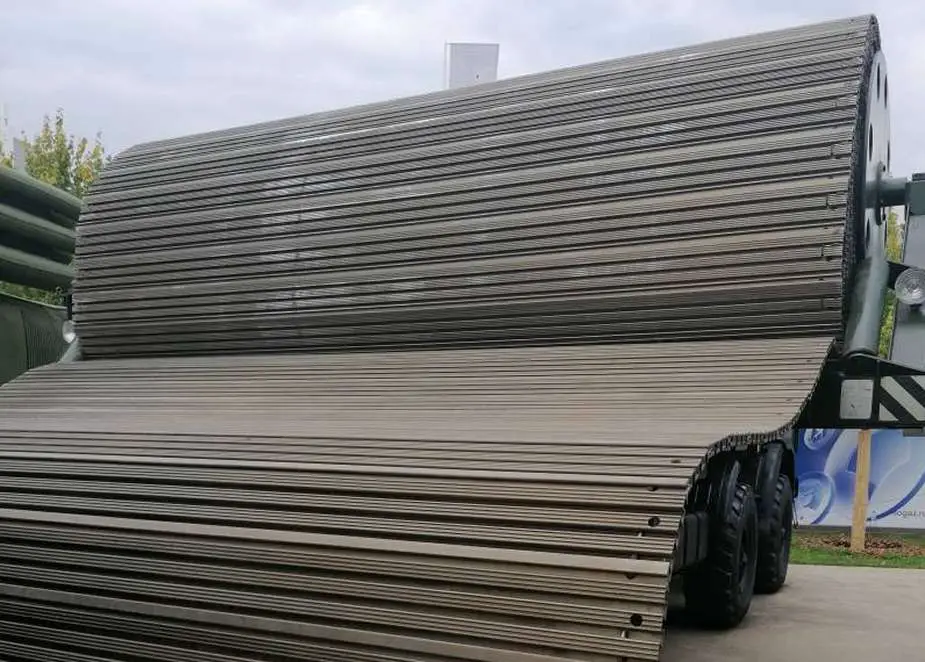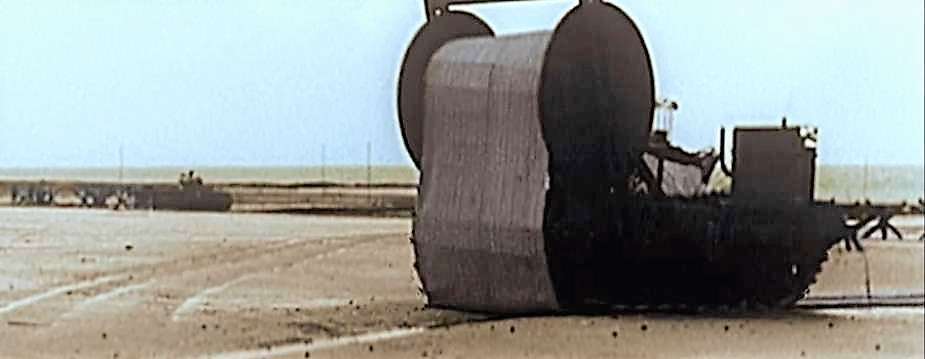Breaking news
Army-2023: Russian company KRVD displayed operational deployment system of temporary road.
According to a report from topwar.ru, the Army-2023 forum featured a demonstration of the KRVD's operational deployment of temporary roads. The KRVD is a mechanized kit designed to facilitate the movement of wheeled and tracked armored vehicles through challenging and swampy terrains, as well as to establish pathways leading to bridges and crossings.
Follow Army Recognition on Google News at this link

KRVD's system is mounted on the chassis of a KamAZ-63501 truck (Picture source: topwar.ru)
The system showcased at the forum is mounted on the chassis of a KamAZ-63501 truck. Once deployed, it constructs a roadway measuring 50 meters in length and 4.6 meters in width. The process of laying down a roadbed takes approximately 5 minutes, and the system can dismantle and pack up the roadbed installed over an obstacle in 20 minutes. The KRVD is capable of accommodating wheeled vehicles with an axle load of up to 12 tons and tracked armored vehicles with an axle load of up to 60 tons.
When confronted with challenging terrain, the system employs an electric motor to unwind a drum containing an aluminum road surface with a special polymer coating. This surface is positioned perpendicular to the platform. The edge of the sheet is placed beneath the rear wheels of the vehicle, allowing the KamAZ to move in reverse, thereby unrolling the roadbed beneath itself. This action compacts the roadbed into the ground using the vehicle's weight. Upon completion of the armored vehicles' passage, the KRVD swiftly retracts the spread roadbed using the same electric motor. This rapid process enables the system to prepare for its next deployment point.

Uran-14 UGV on KRVD's soft-ground crossing system (Picture source: topwar.ru)
Let us recall that this type of soft-ground crossing system dates back to World War 2. It was developed by ingenious British Major General Percy Hobart who invented or improved a range of systems intended to overcome various types of obstacles. They were nicknamed "Hobart's Funnies". These specialist armored fighting vehicles were derived from tanks operated by units of the 79th Armoured Division of the British Army or by specialists from the Royal Engineers. They were designed in light of problems that more standard tanks experienced during the dramatic amphibious Dieppe Raid in 1942, so that the new models would be able to overcome the expected problems of the planned invasion of Normandy, in June 1944. These tanks played a major part on the Commonwealth beaches during the landings. They were forerunners of modern combat engineering. The vehicles converted were chiefly Churchill tanks and American-supplied M4 Sherman tanks.
One of « Hobart’s Funnies » is the ancestor of KRVD’s device shown at Army-2023: the Churchill AVRE Bobbin. A reel of 10-foot (3.0 m) wide canvas cloth reinforced with steel poles was carried in front of the tank and unrolled onto the ground to form a "path", so that following vehicles (and the deploying vehicle itself) would not sink into the soft ground of the beaches during the amphibious landing.

Churchill AVRE (Armoured Vehicle Royal Engineers) Bobbin (Picture source: Wikipedia)

Churchill AVRE Bobbin at work on a beach (Picture source: Wikipedia)
Defense News August 2023


























